2019 Polaris Snowmobiles News. Polaris snowmobiles has always been among the leaders in performance and efficiency in the world of two-stroke snowmobiles. For a few years now, we’ve been hoping for a revival of the American manufacturer’s more sporty vehicles. The existing models have been improved and refined, but nothing really catchy to attract the high performance customers. Last year, the arrival of the Titan undoubtedly gave the company a breath of fresh air. This model was a hit in the 20-inch category in Quebec, with power, versatility and comfort all on the table for those who occasionally have to work with their snowmobile and ride on the trail. Its trail behavior is at the top of the list among work snowmobiles, good stability in turns for a 20-inch, able to follow and even make models strictly designed for the trail blush.
Indy 129
The Indy 129 is an all-new model for 2019, and undoubtedly the one that will get major attention this season. Polaris executives categorize it as the lightest 129-inch snowmobile on the market. As for the chassis, it’s the AXYS, but adapted for a 129-inch track, which is completely new for this year. New PowdertracTR 129 footboards, offering a good grip on the boot, the rear is more closed to reduce snow return. A new rear bumper, more ergonomic, light and resistant, combined with a new snow guard improving snow circulation for better cooling.
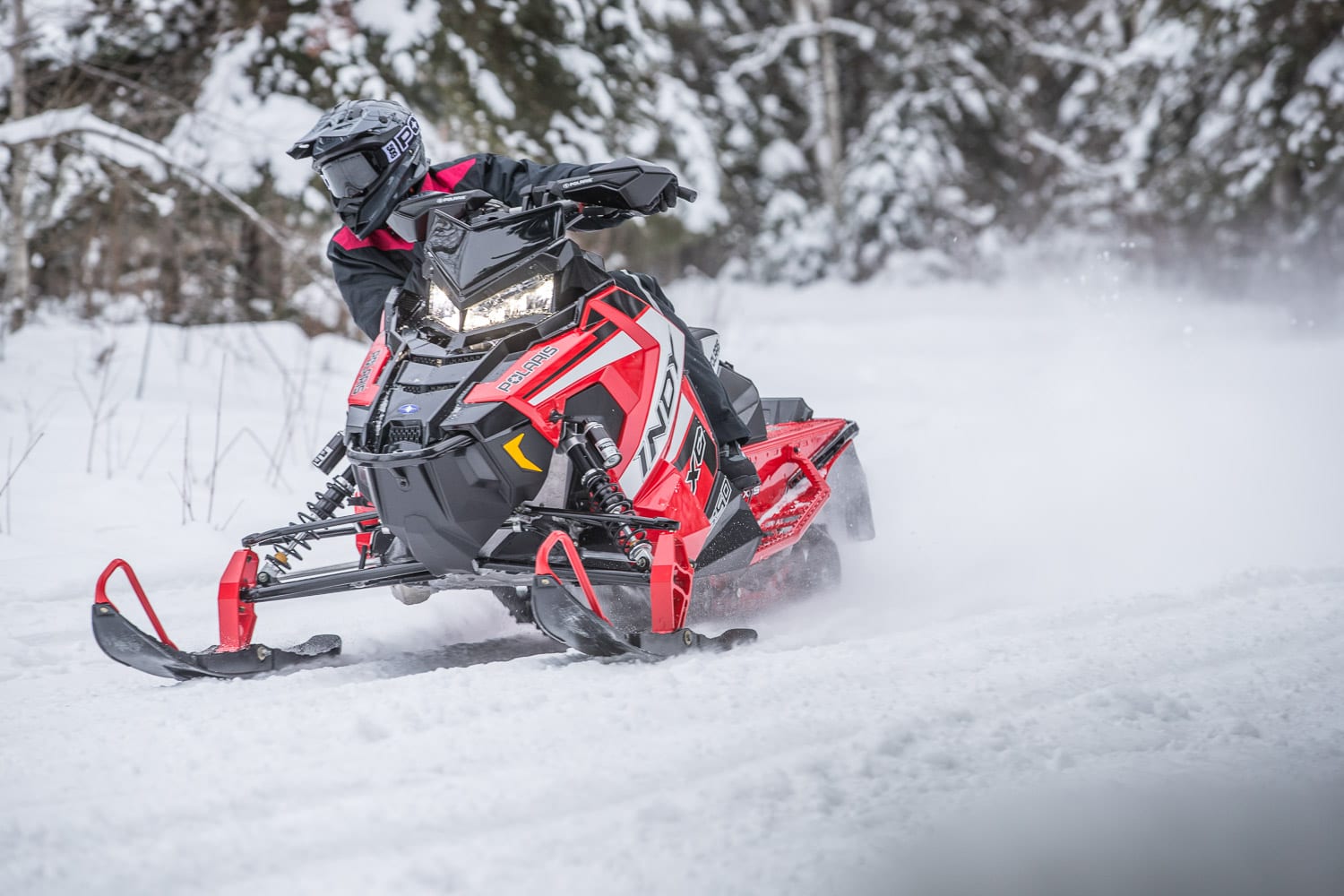
A 850
A lot of bets were on the table for the new year from the American manufacturer. But I don’t think many of you had bet on the release of an 850 CC… A multitude of theories exist on the production of two-stroke engines, just like Ski-Doo, Polaris engineers developed an engine with a ratio between the stroke and the bore as close as possible to 1 to 1, to reach a maximum of power and efficiency with a reduced inertia that provides a better throttle response. Polaris didn’t give us any information about the power of its new Patriot engine, the only answer we got after much insistence was about 10 more horsepower than the 800 CC Cleanfire engine, with a little smile on our face…
Under the microscope… Piston
What about a closer look, all the following figures are in comparison with the 800 Liberty engine from Polaris. We start with the piston, the upper part of the ring, the dome, is 3 millimeters thicker, to better absorb the power gain. The height of the compression part of the piston is 8 millimeters higher to improve heat transfer. In total, a 23% increase in the contact area between the piston and the cylinder wall to improve heat transfer.
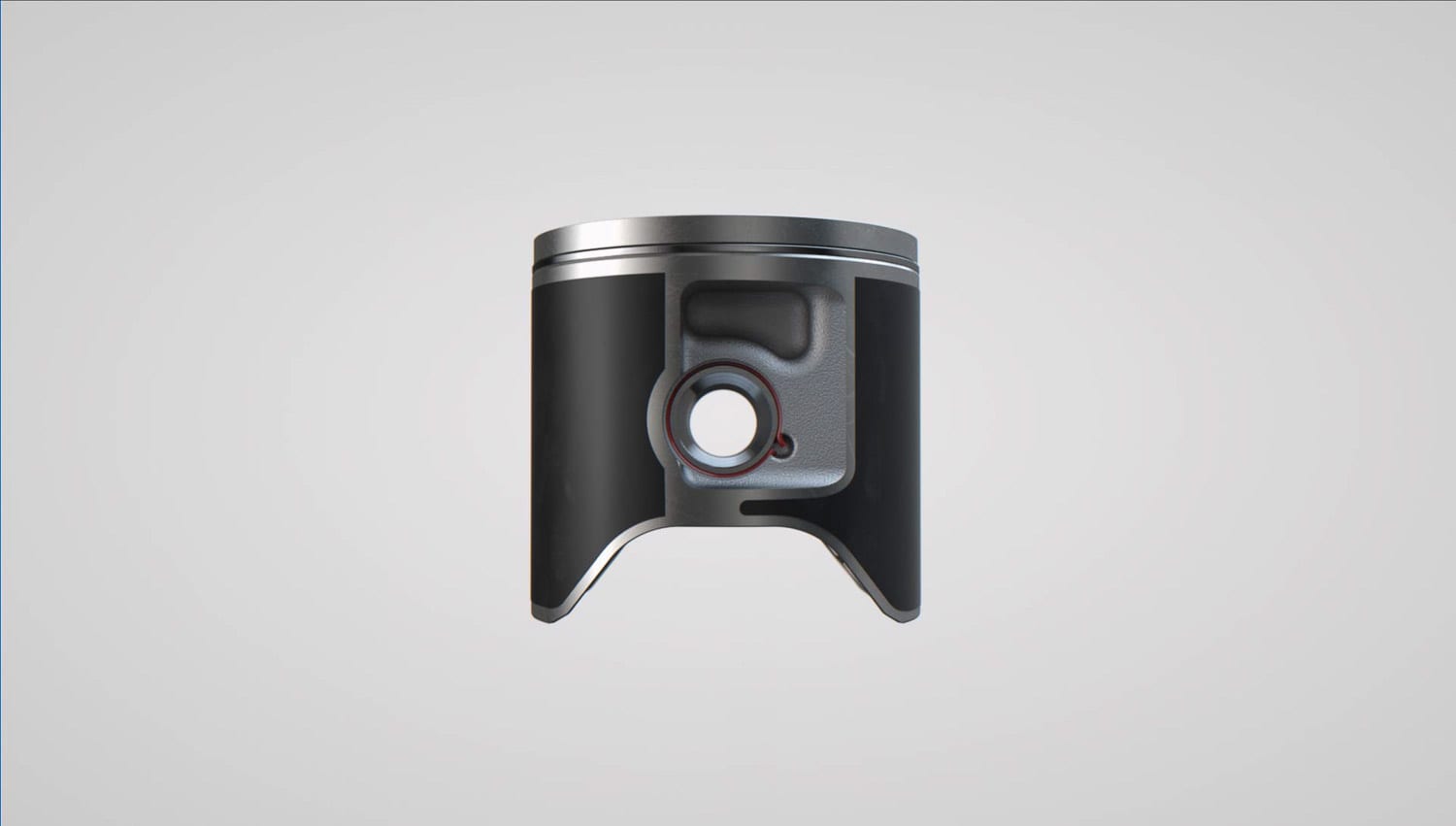
Vilebrequin
Completely redesigned, it is stronger and more resistant while maintaining a very low level of inertia. The cluch mounting is larger for better durability and easier service. The crankshaft ball bearings are much larger and stronger, especially at the ends, especially on the clutch side. The crankpins, which connect the connecting rods to the crankshaft, are made of very high grade steel (Case Carburized SNCM 420H) to increase strength.
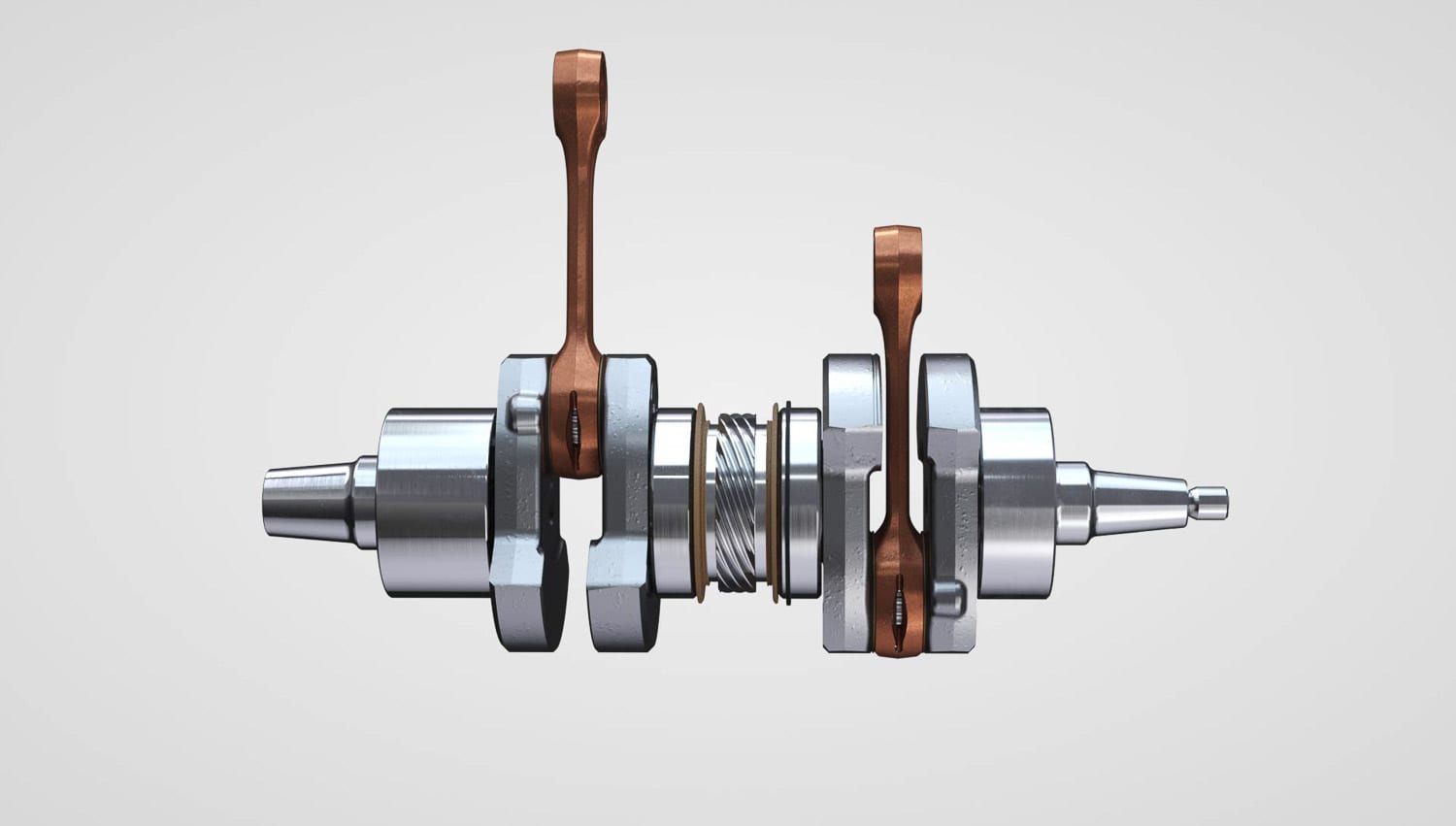
Cylinders and head
A lot of work has been done to improve the cooling capacity. Using a computer simulation system, engineers have produced a very sophisticated cooling system that allows for very high flow rates of fluid through the cylinders, head and exhaust valve wells. Both cylinders are integrated into a monoblock that is attached to the base of the engine via six bolts per cylinder. The exhaust and intake ports of the cylinders are designed to allow a very high flow rate, optimizing the maximum performance of the engine with a perfect combustion. The one-piece head is optimized to produce maximum coolant flow with reduced weight. Its patented combustion chamber allows complete combustion at all engine speeds.
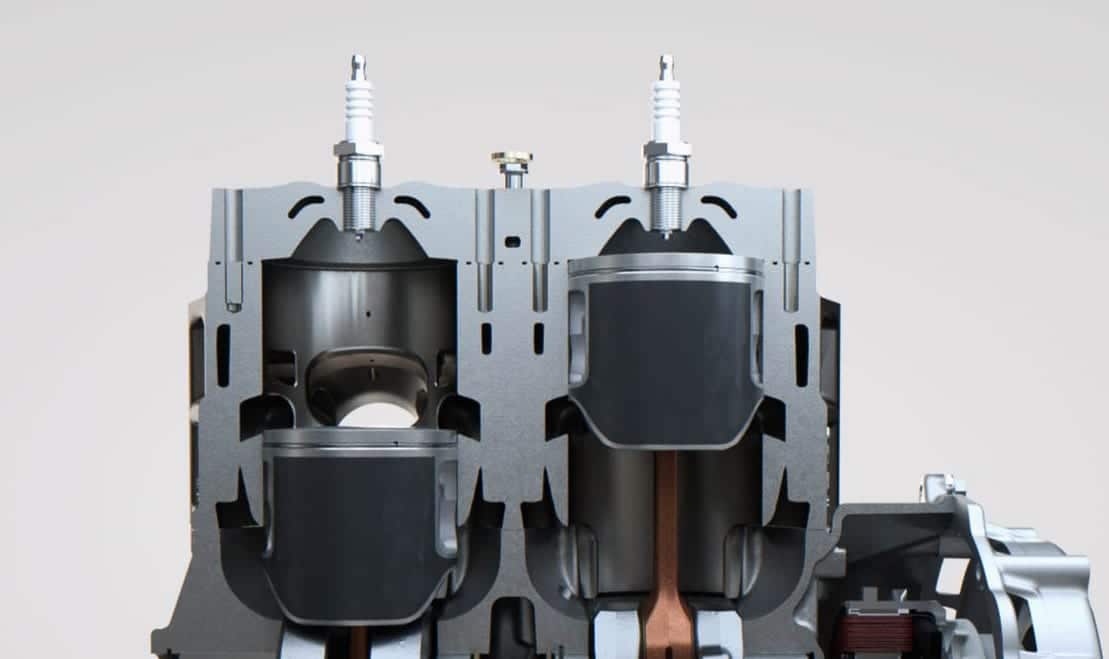
Coolant tank
The coolant reservoir is completely redesigned and incorporates the thermostat for increased performance. A bypass is built in for faster warm-up on cold starts. And the system has its own automatic purge system.
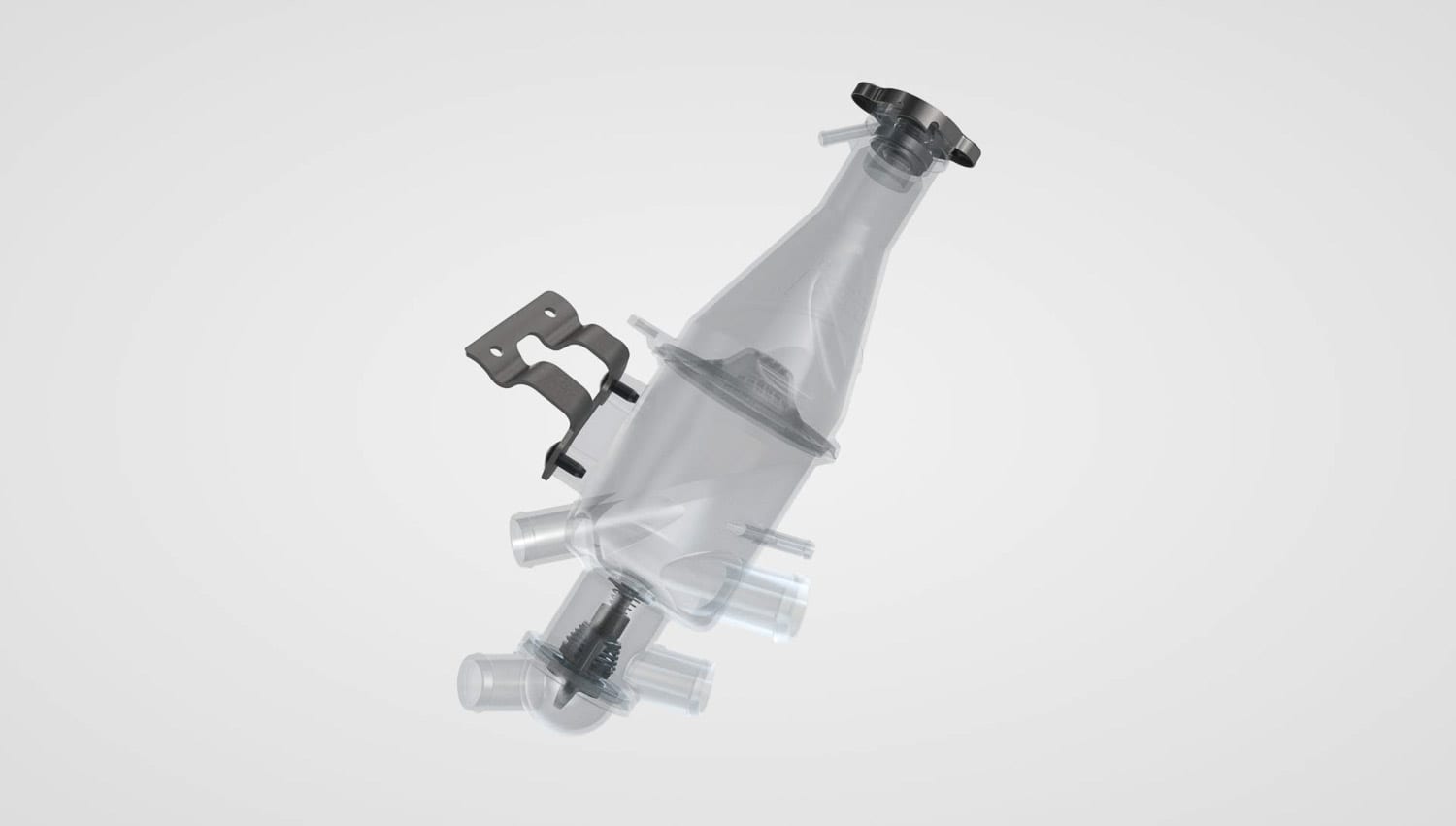
New engine mount
The new motor mounts allow the new 850 to be well integrated into the AXYS chassis. Their rigidity allows to keep a good alignment between the pulleys to increase the life of the belt, and to minimize the transmission of vibration to the pilot.
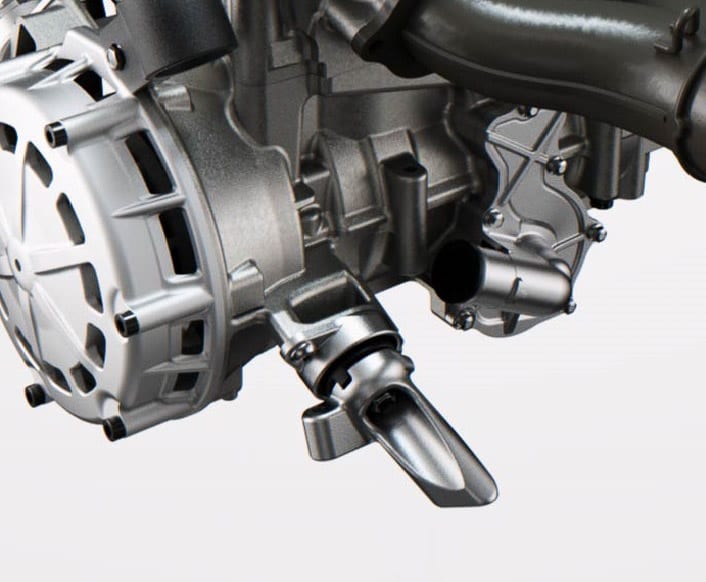
Intake body and TPS
Throttle bodies are completely redesigned and lighter. They are equipped with a non-contact, reliable and adjustment-free throttle position sensor.
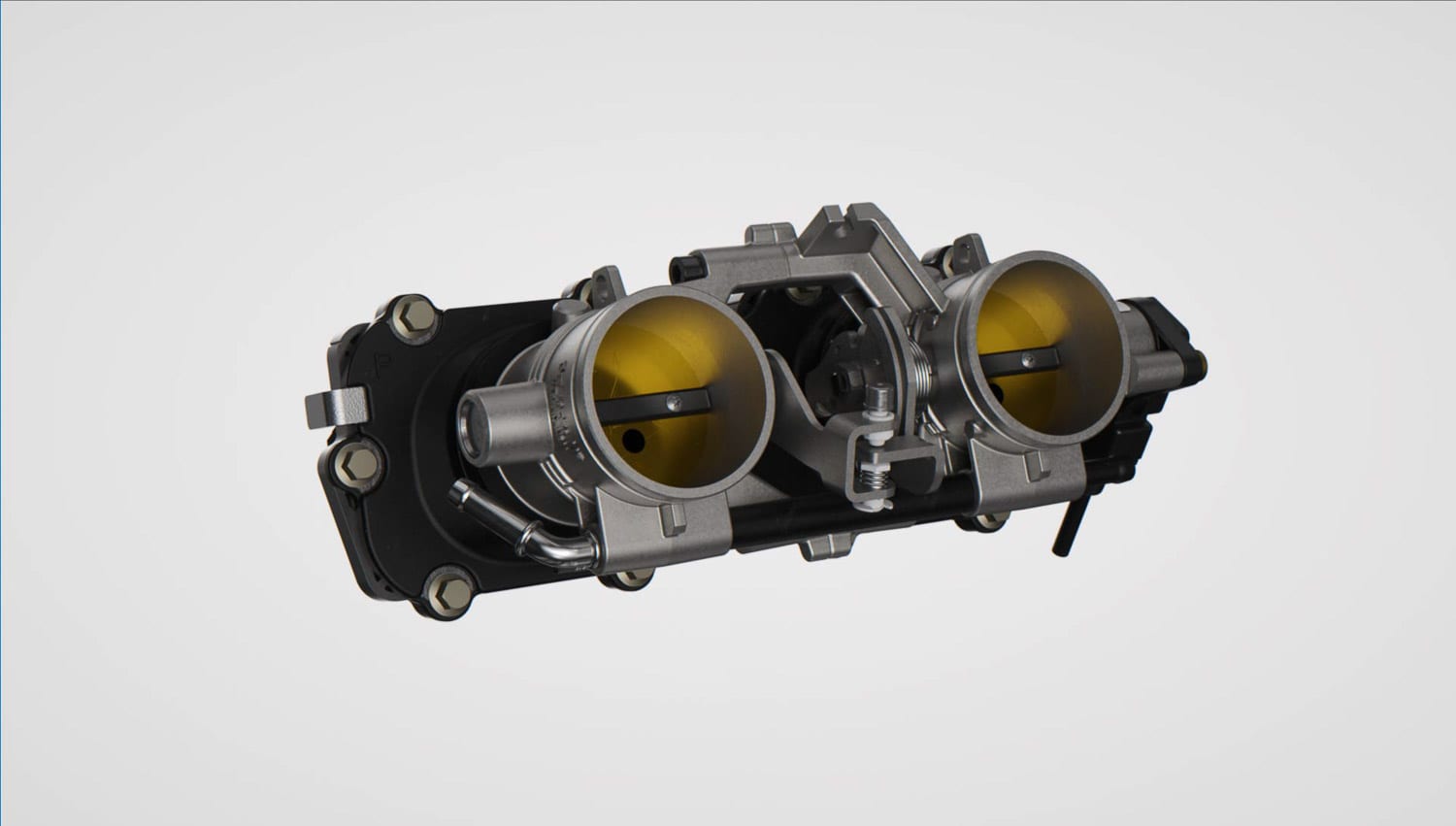
Increased current
The 850 has a new current regulator that makes starting easier. It provides more electrical power at idle and at low rpm. The electronic control unit (ECU) is equipped with a faster processor that now integrates the control of the exhaust valves.
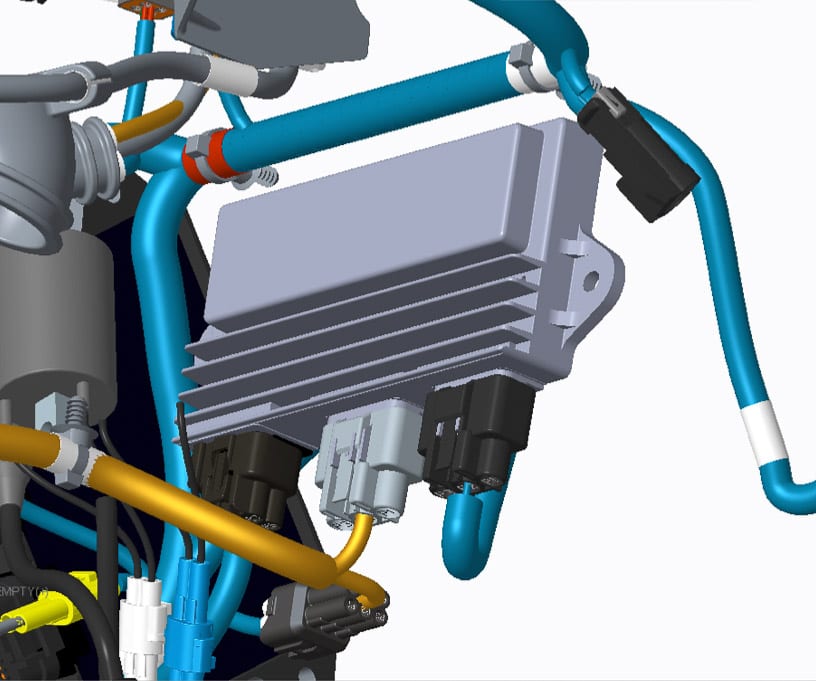
New exhaust valves
The new E-VES electronic exhaust valves are simplified with fewer parts, lighter and die-cast in magnesium. To optimize performance, they are perfectly matched to the cylinder exhaust outlet and fit snugly to the pistons. Internal cooling ducts reduce the temperature of the valves.
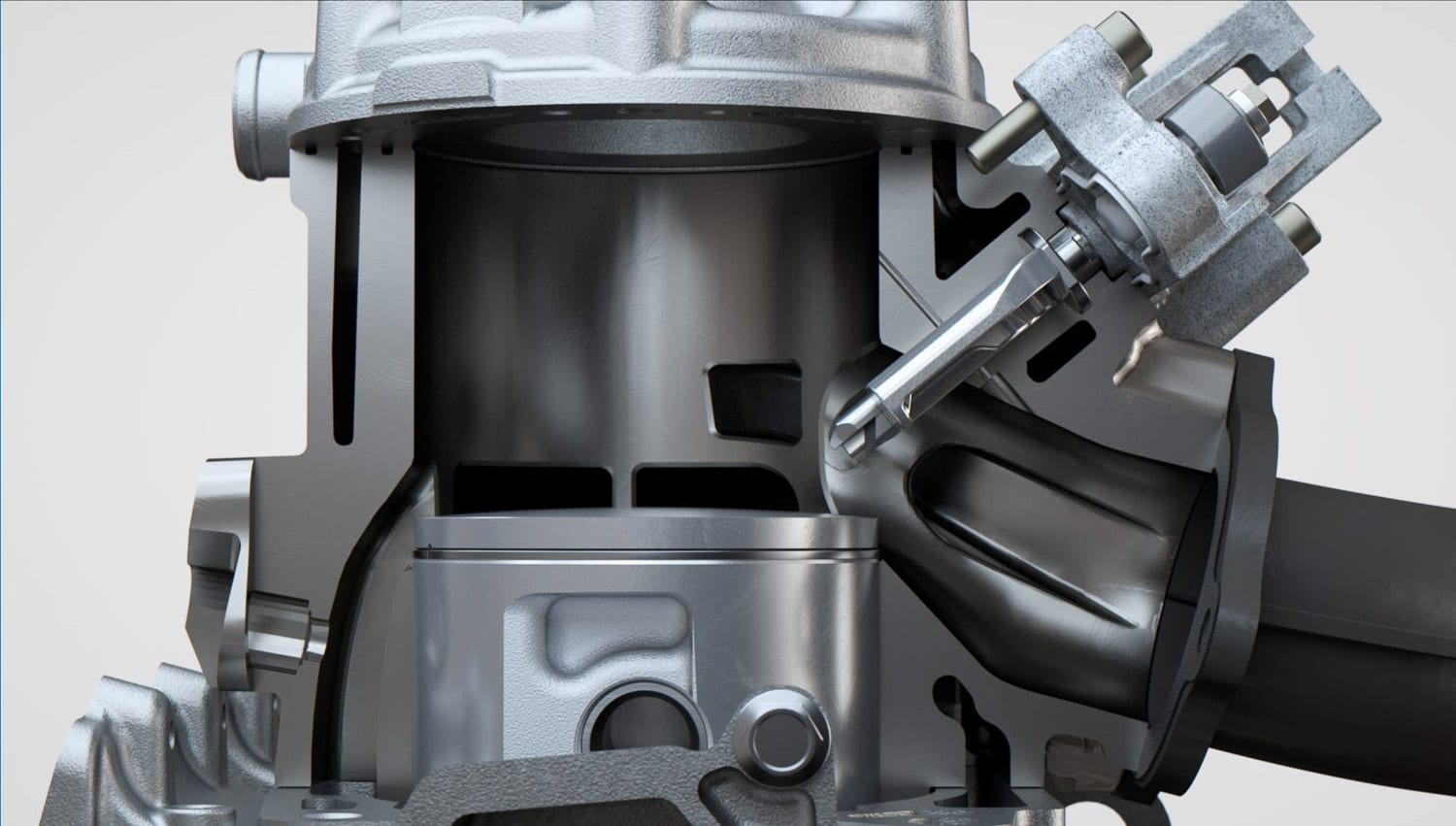
The calibrated pipe and resonator are completely new. They provide a better flow with an EGT sensor in the resonator, which allows a better control of the air/fuel mixture. Fuel pressure sensors combined with an electronic pump are used to provide proper mixing in all conditions, to improve cold starts, and especially to protect the engine in case of a component malfunction.
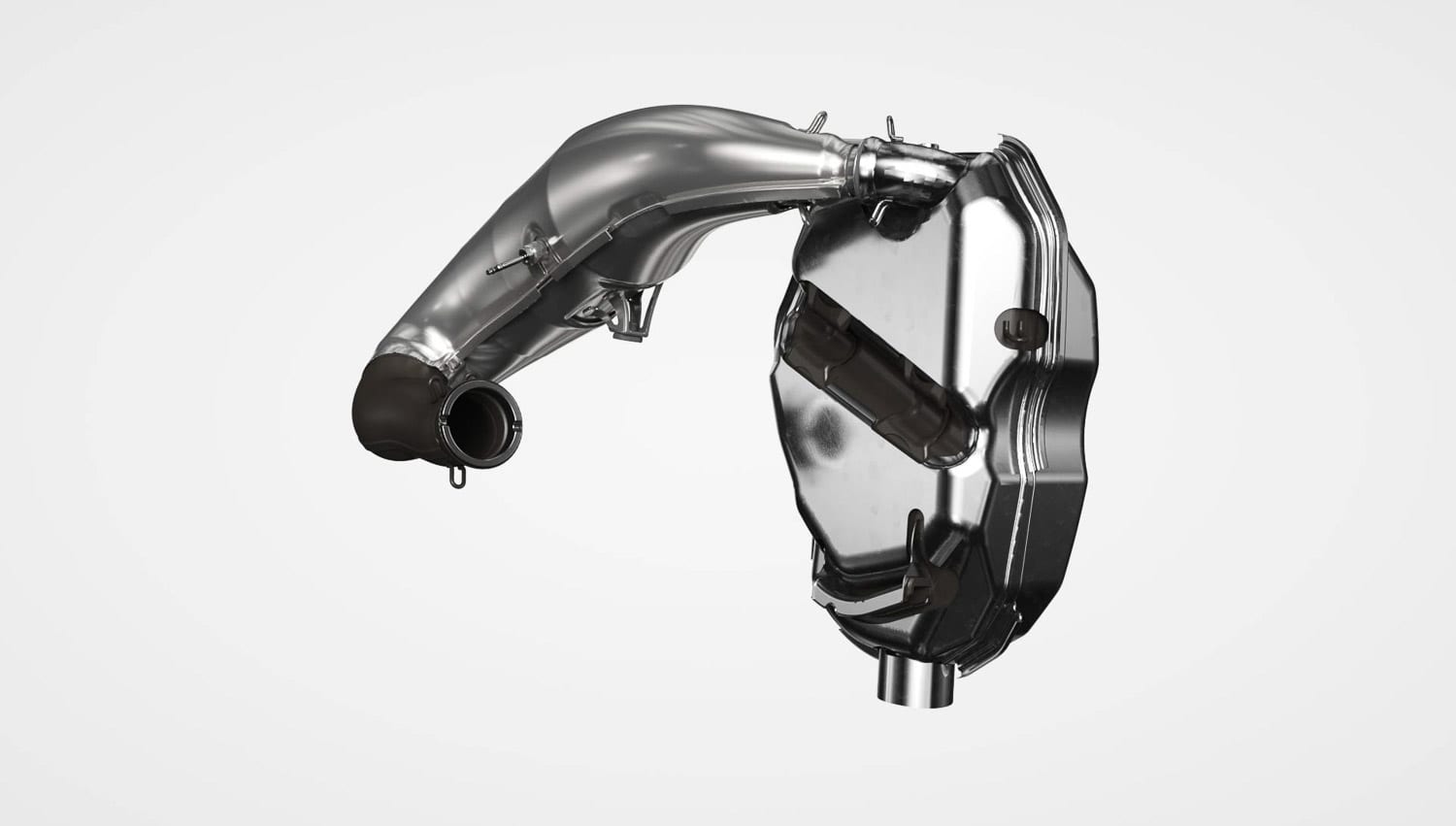
On the track
I rode this new engine at West YellowStone, during the 2019 Snowshoot. The starting altitude is about 6500 feet, easily reaching 10 or 12,000 feet on the mountains. As we’ve explained before, an atmospheric two-stroke engine loses about 4% power per 1,000 feet of altitude, which is easily 25% less at this location. And the mechanics are working hard to provide us with completely new clutch calibrations, given the power loss. Will this new engine give you value for your money? Definitely! During our tests, the clutch calibration was very heavy at low rpm, which diminished the engine’s revolution and performance a bit, not offering the maximum of what it can offer. However, at full throttle this car was very, very fast… I can tell you that I saw top speeds that were close to the performance of turbocharged engines that were not affected by altitude… At the time of our testing, the zero to mid-range performance was comparable to the 800 Liberty, but we know that the calibrations were later revised to put the 850 well ahead of the 800. Some have even suggested that there is as much difference between the 850 and the 800 as there is between the 800 and the 600… No doubt, this engine will deliver…
PRO-CC 129
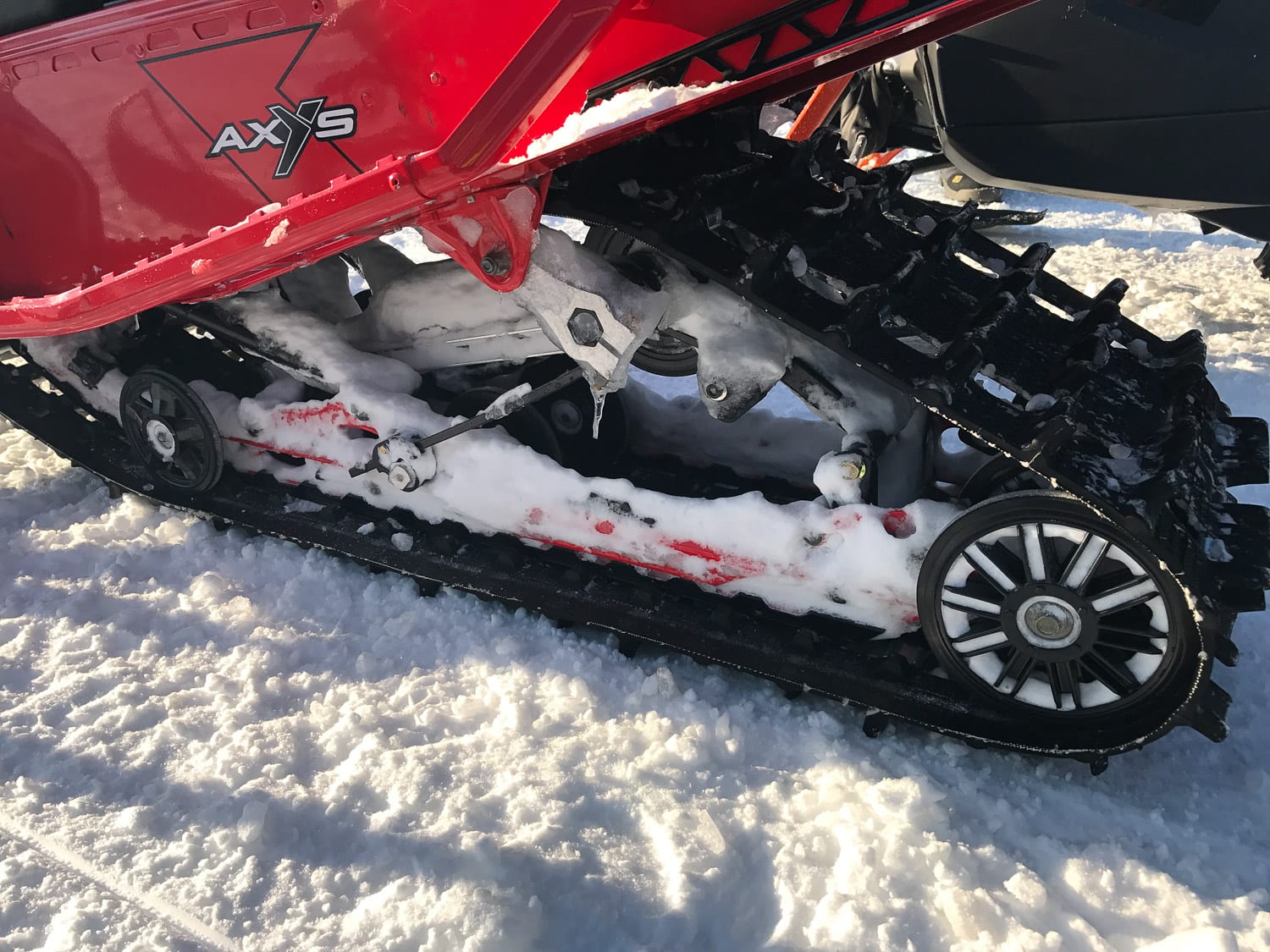
Finally a 129 inches version, some will say, others will say I’ve already seen a similar suspension geometry at Polaris… It doesn’t matter, it’s the result that counts and believe me the result is there. Polaris presents its new PRO-CC 129 suspension, with a brand new cradle profile, which has a weight transfer control system. It is therefore possible with this suspension to adjust the transfer blocks to give more or less weight transfer during acceleration. This new suspension offers good progressiveness, which allows you to have a good level of comfort in small bumps and continue to deliver the goods in rough terrain without bumping into the bottom. But the most interesting factor is undoubtedly the ability to adjust the weight transfer under acceleration. Adjusted to the maximum coupling, the skis remain nailed to the ground at all times, without any considerable loss of comfort in small bumps. And if you want more weight transfer, you can easily do it in seconds. And to ensure maximum performance, the PRO-CC 129 features new Walker Evans external reservoir shocks, the center one with better access to adjustments with a new spring, and the rear one with better oil flow and better access to adjustments.
En sentier, les adeptes vont adorer. La suspension est facilement ajustable et rejoint tous les types de pilote. Il est facile de garder les skis au sol en sorti de virage ou en accélération, et ce sans compromette sur le confort… Plusieurs diront qu’il n’y pas vraiment de nouveau dans cette suspension, et c’est exacte, le concept est largement utilisé depuis quelques années d’ailleurs, mais encore faut-il trouver le bon compromis entre le confort, la tenue de route et la bonne calibration… Bravo!
Nouvelle suspension avant PRO_RMK React
Plus précise et prévisible, elle demande moins d’effort pour initier la conduite à flanc de montagne, ce qui en résulte à moins de fatigue pour le pilote.
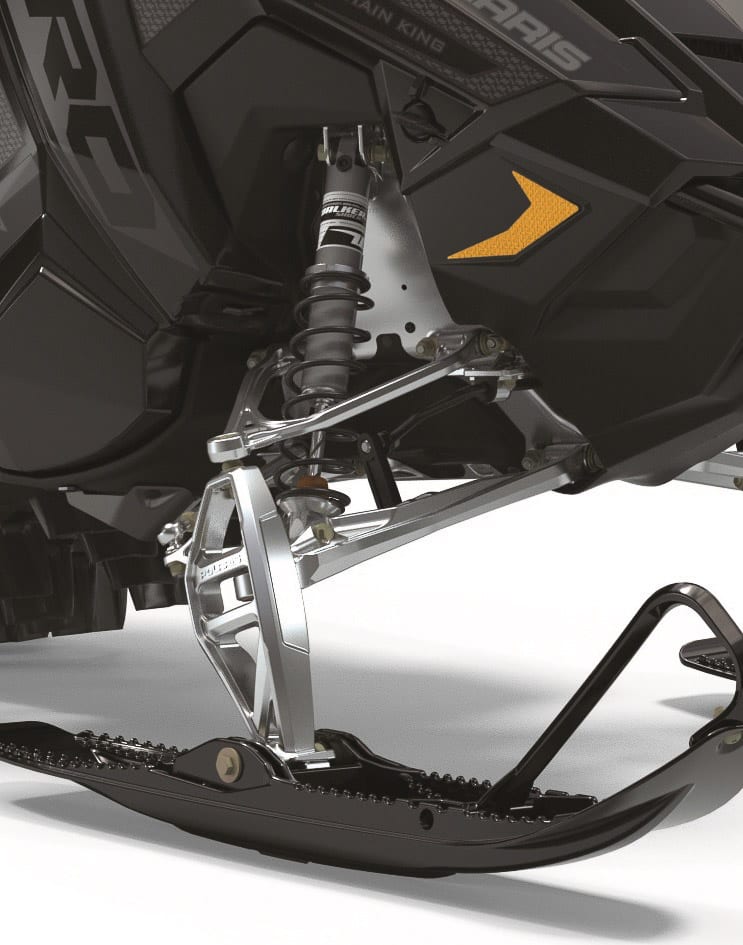
Under the magnifying glass
The new suspension offers adjustable ski spacing from 36″ to 38″. The suspension geometry is completely new with triangulated arms and forged aluminum ski poles. The suspension travel is the same as the previous versions, however, the shocks are now equipped with very light SLS springs that weigh 3 pounds less and are even lighter than some titanium springs! Polaris claims that its suspension offers 16% less inertia than the competition.
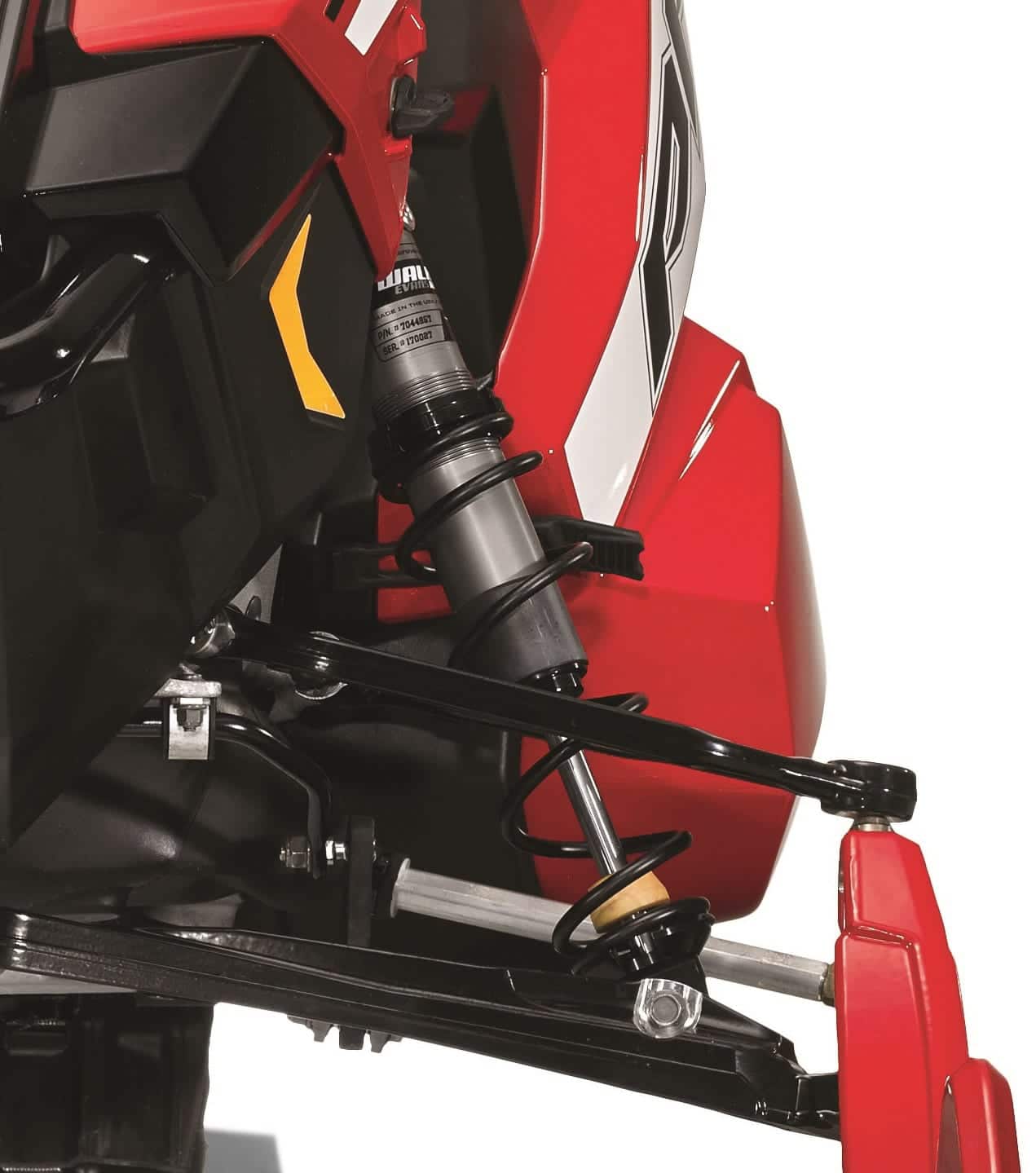
Paired with the new 850, Polaris have made a more powerful and easier-to-handle machine. With the traction of a mountain snowmobile, it’s even easier to feel the power and linearity of the new thoroughbred. There is no longer the difference in power that is easily felt on the 800s when the exhaust valves open. The engine hardly vibrates, the power is very linear and well proportioned according to the gas pedal.
Indy EVO
Polaris is really attacking an almost unexplored market in the industry, a trail snowmobile but really designed for the young beginner! Currently on the market, if you want to initiate a 15, 16 or 17 year old, there are not many compromises, either a full size trail snowmobile, or a 200 CC which is not really developed for riding.
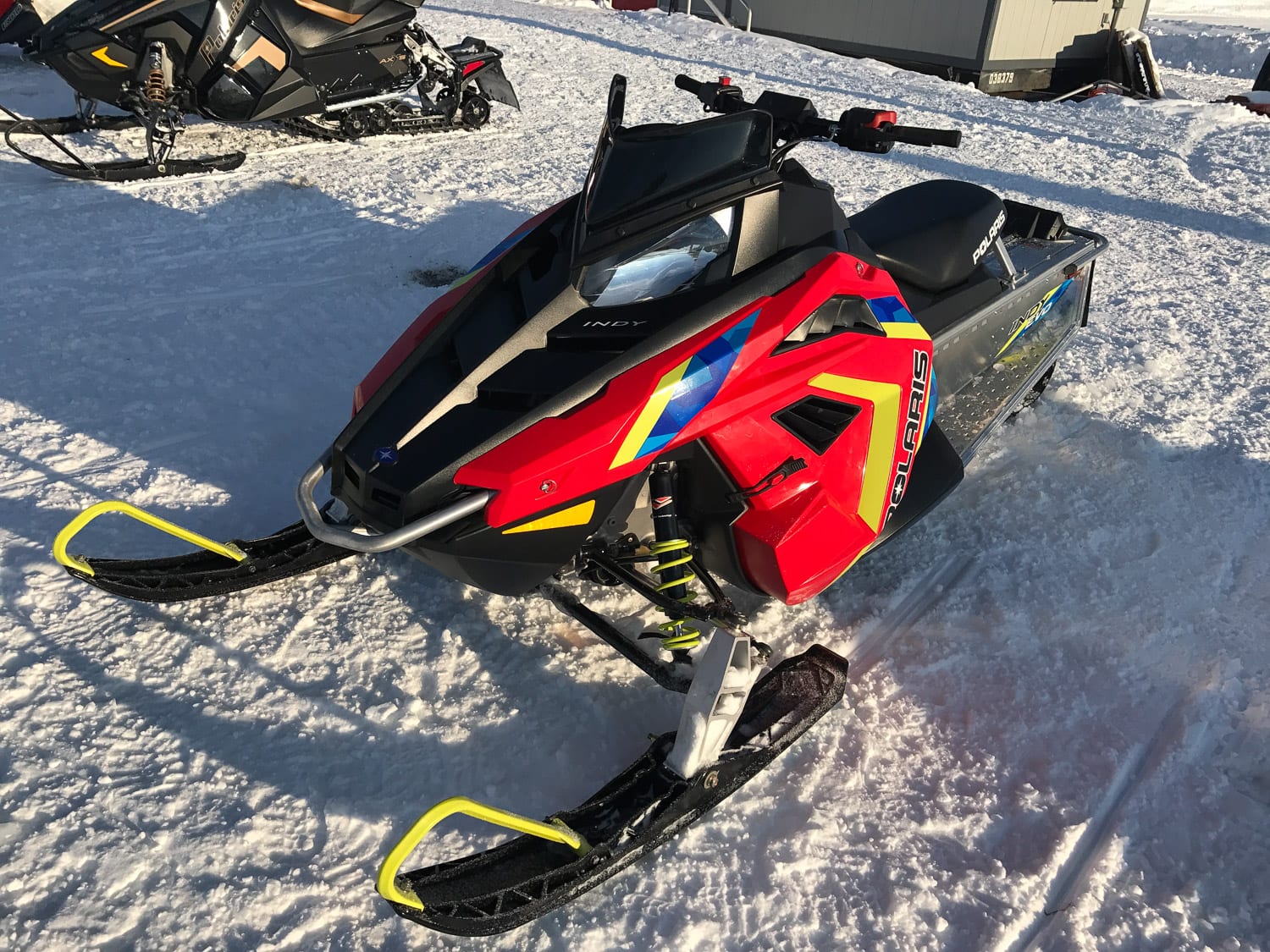
The EVO joins exactly the trail market for a young beginner, it could be described as a ¾ size snowmobile, slightly smaller than a trail model. Its center of gravity is lower, and its width is reduced to provide a better stability effect for the learner. Even the throttle has been redesigned for easier use with small hands.
On the engine side, the very reliable 550 CC fan-cooled, which is very common at Polaris. The engineers have added a very interesting concept of speed regulation, the system allows to electronically limit the speed to 80 km/h for the beginner. And as the beginner’s skills develop, it is possible to gradually increase the maximum speed with the help of a kit!
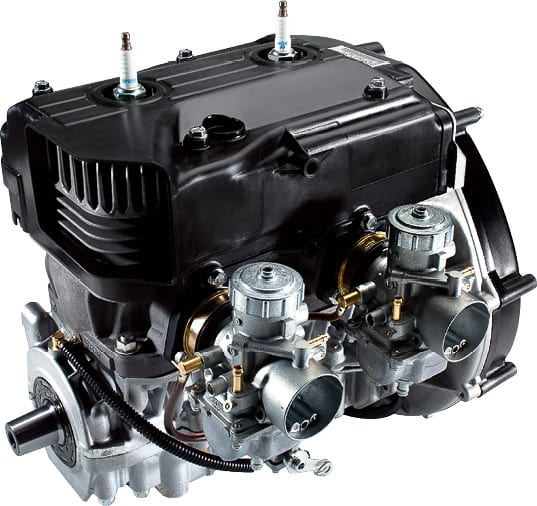
The independent IFS front suspension with adjustable position, offers a good level of stability with a lower center of gravity. And a version with electric starter is also available.
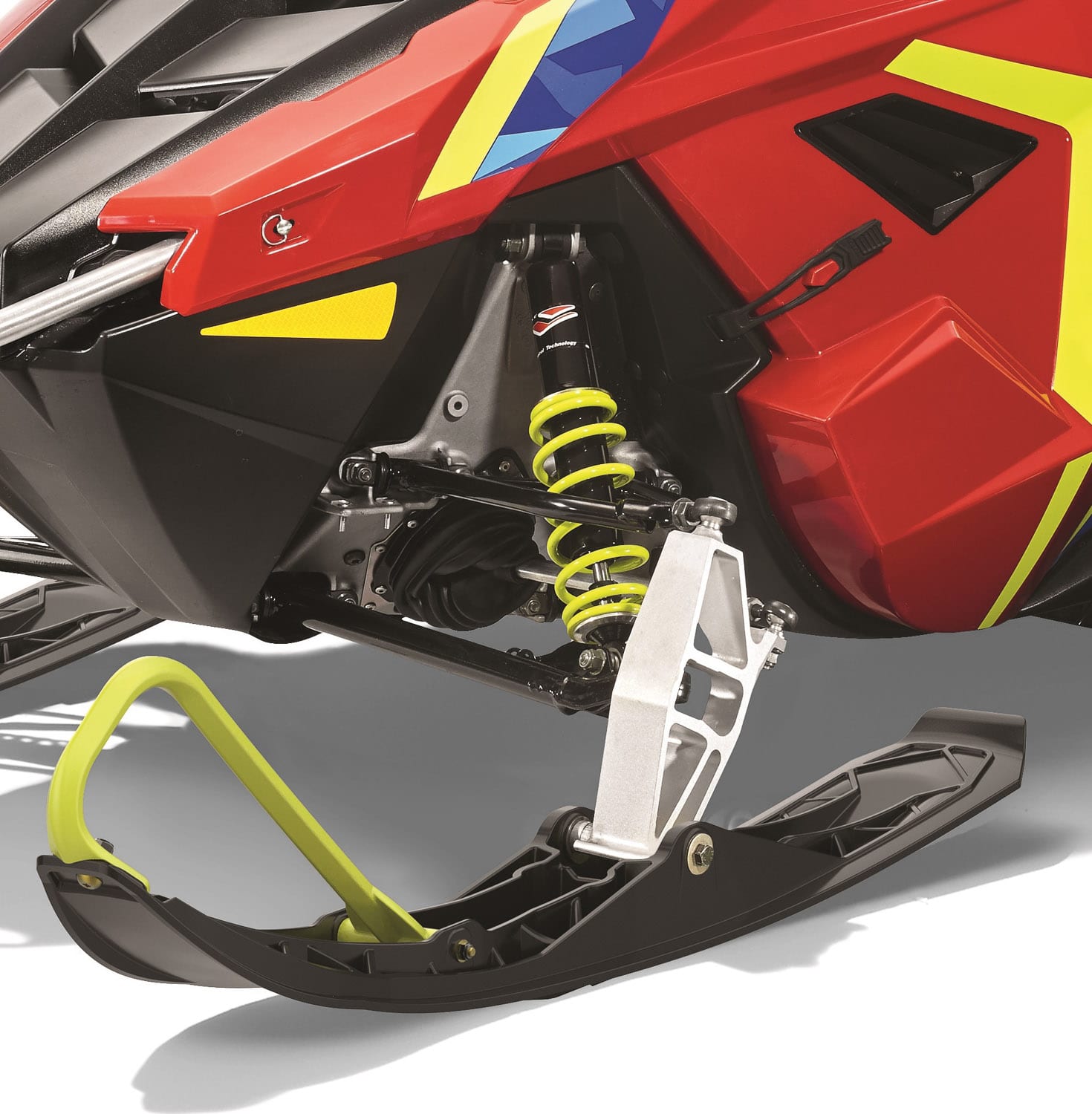
A beginner’s snowmobile should offer a good level of stability, and that’s exactly what the snowmobile provides. After a few minutes on the trail, you notice an excellent stability in turns. The center of gravity is really low and gives a very grounded feeling. The adjustable performance level works well and is really a good solution for the young teenager who is just starting out! And this snowmobile will allow him or her to follow in our Quebec trails!





